Italian food, developed to perfection over more than 1.000 years
Italian cuisine (cucina) is much more than a form of food; it is a way of life in a country where family, friendship and celebrations are indelible. Italian cuisine is simple, vibrant, and good for you.
Italy is one of the oldest countries in the world, and thanks to the geographical limits of the Mediterranean Sea and the Alps, it has remained largely unchanged throughout history. Even during the Roman Empire, Italy was set apart.
Italian cuisine is a top food brand
Italian cuisine is very famous: much appreciated and tirelessly imitated around the world, it has been a source of endless pleasure and joie de vivre in countries all over the world. Italian cuisine is not just for Italians, but for everyone.
If you are going to take a trip to Italy, you will definitely want to experience what this beautiful country has to offer, and that is the fact that Italian cuisine is exotic. This food is what you would expect when traveling to distant lands, and you would be hard pressed to soak up all the culture and flavors of this food because even in its country of origin it is so diverse.
People love Italian cuisine all over the world.
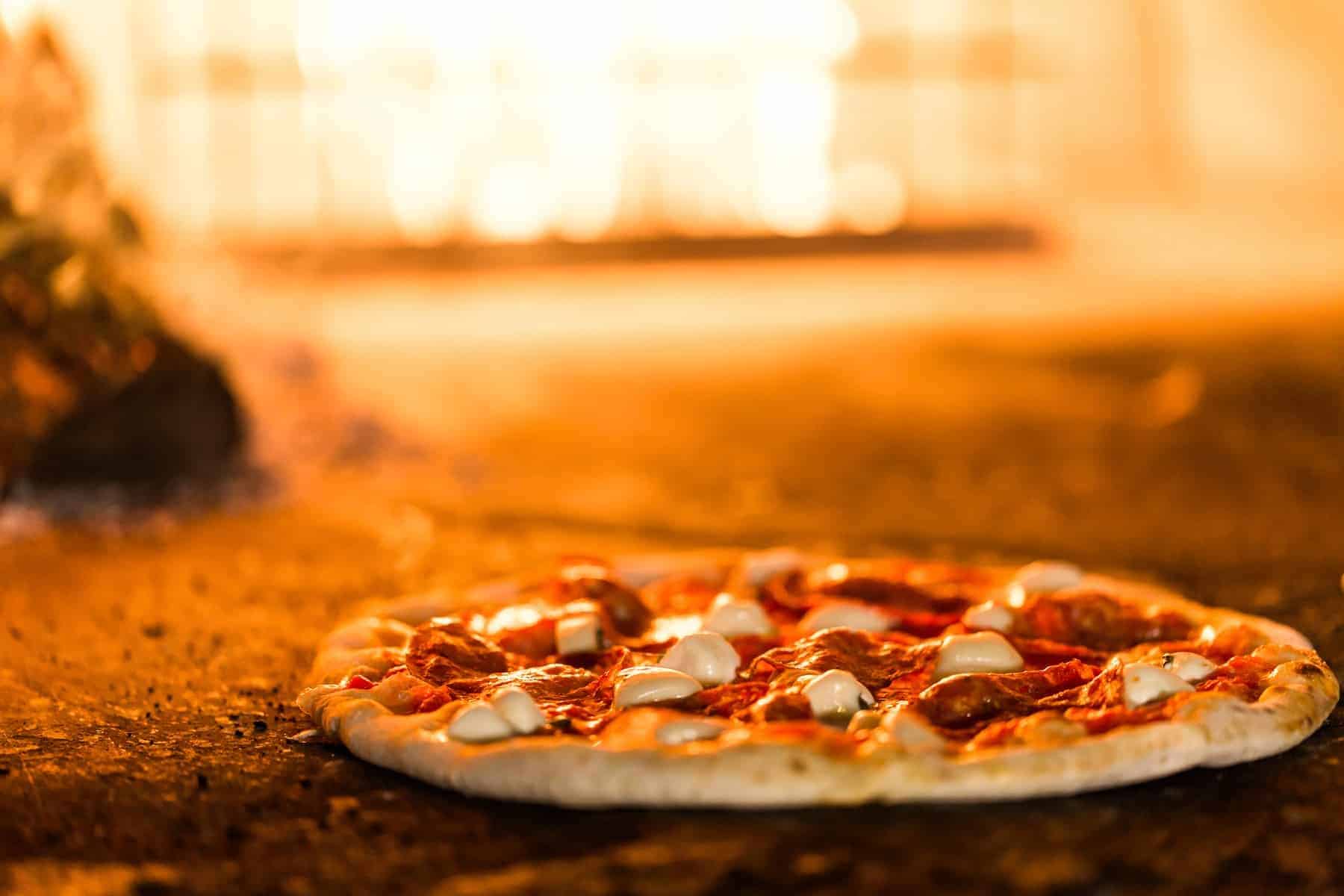
Italian pizza Napoli style
Pizza Napoletana (Naples)
Maybe no other popular dish in Italy captures the essence of Italian cuisine better than a pizza. The history, simplicity, and new, high-quality ingredients come together to make the best, most authentic form of pizza.
A Neapolitan-style pizza is a flatbread topped with tomatoes, mozzarella cheese, and extra virgin olive oil. Making a real Pizza Napoletana is an art involving more than 3 or 4 basic ingredients.
Tomatoes must be grown in the volcanic soil of San Marzano sul Sarno, while paste must be prepared with unique ingredients, formed by hand and topped only with D.O.C. Mozzarella di Bufala Campana. The pizza should be baked in a wood-fired oven with two forms of wood at 900 degrees for 60 to 90 seconds.
There are three official variants of Napoletana pizza. The famous pizza pie is said to have been created by Neapolitan pizza maker Raffaele Esposito in 1889, during a visit to the city by Queen Margherita of Savoy.
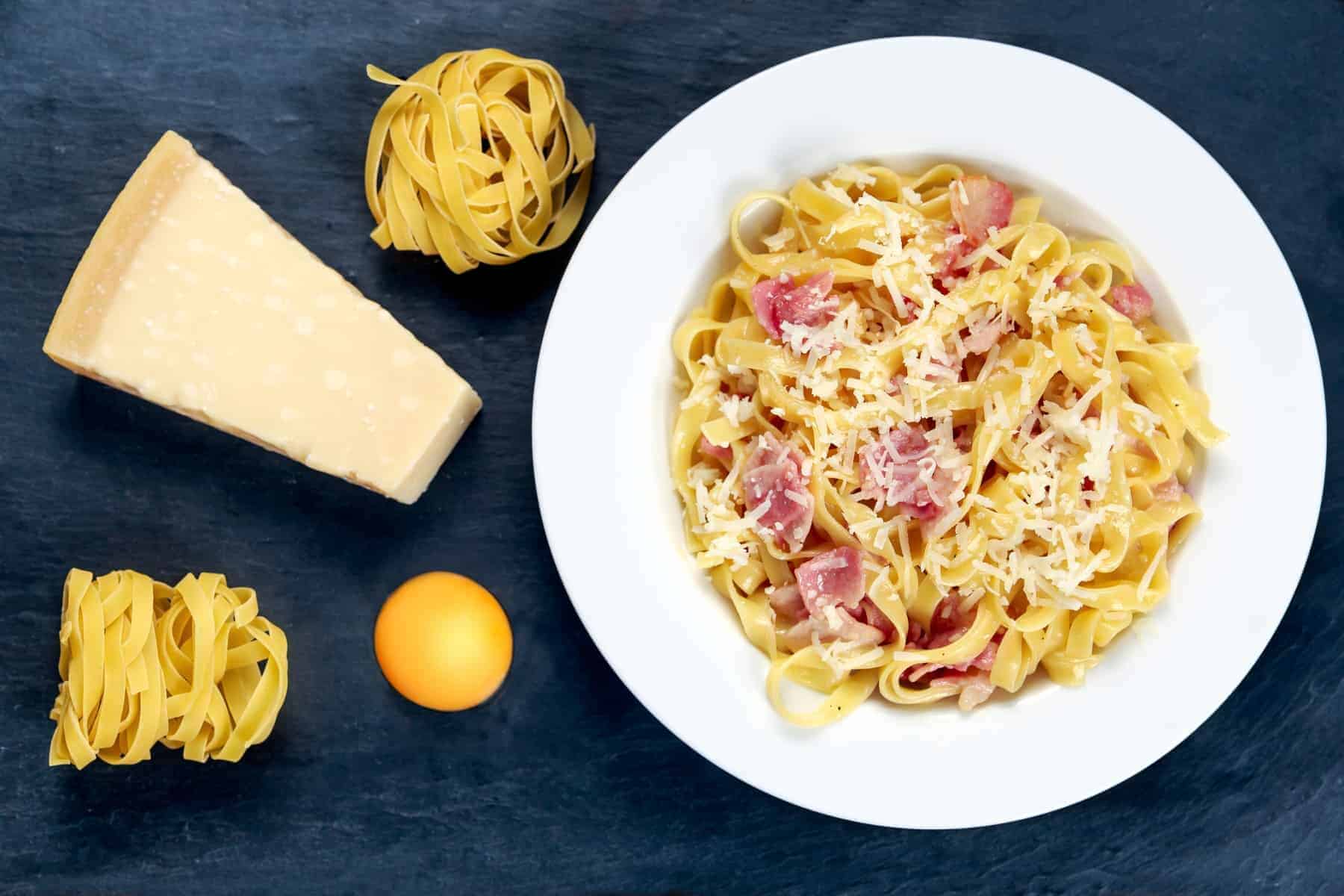
Pasta carbonara Italian. decorated with tagliatelle classic style
Spaghetti carbonara (Rome)
Rome, the “dispenser of spaghetti” and one of the pillars of Italian cuisine as well as “Carbonara”, a southern Italian staple, has become over the years one of the most popular food choices of our world.
It contains guanciale (a pig-based meat) instead of bacon, egg yolk, and cheese. The cream was omitted in favor of a taste of the preparation.
A Roman pasta dish is followed by a carbonara (bacon, parmesan and tomatoes) or its ancestor the gricia (same ingredients but without tomatoes) or “cacio e pepe” (pecorino cheese, black pepper and pasta cooking water).
Spaghetti is seldom the main ingredient, but this is always supplemented by the cacio e pepe pasta and bucatini with amatriciana.
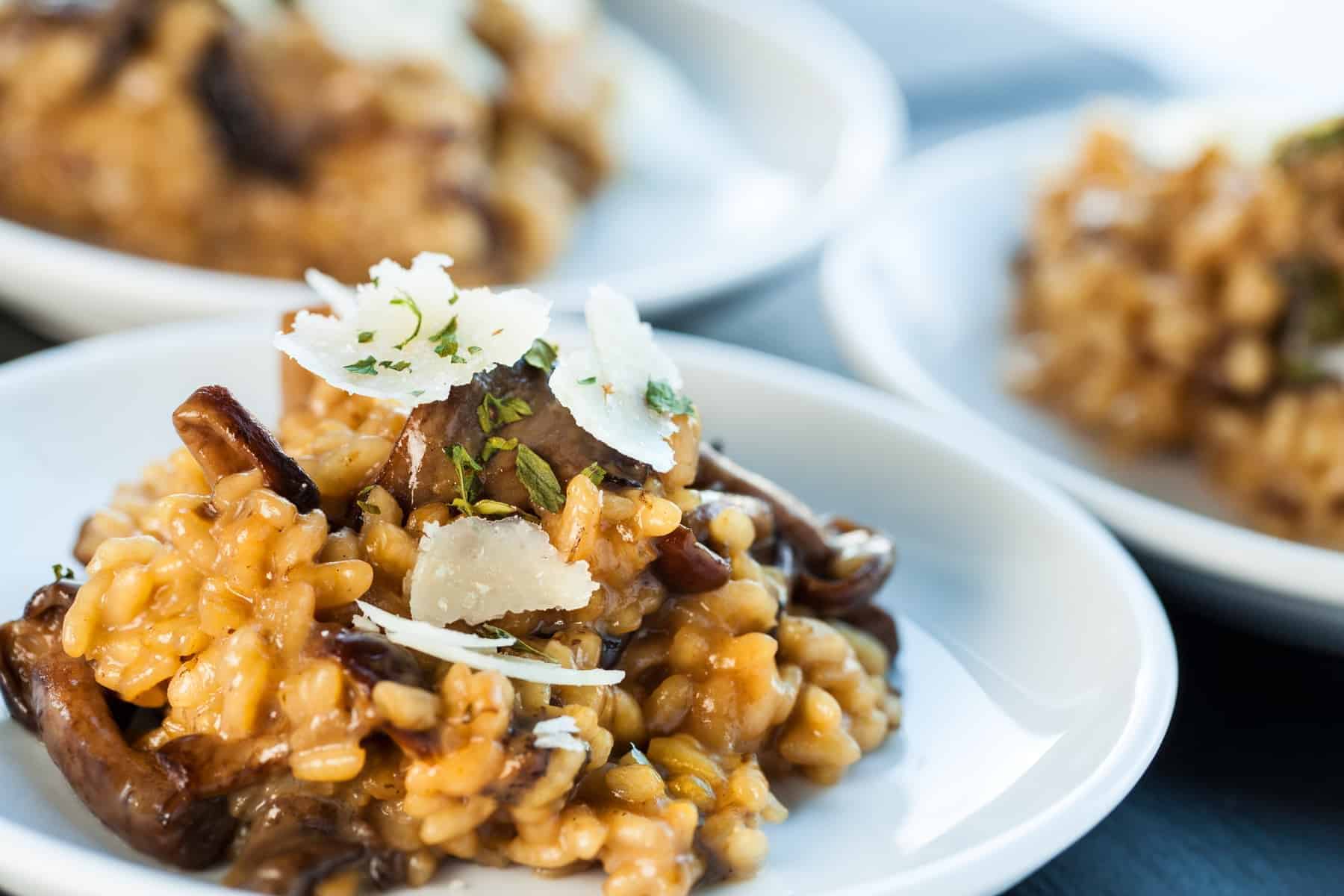
Fungi risotto rice.
Risotto
Rice, which is often eaten as a creamy and luxurious risotto, complements the holy trinity of Italian starches. Ironically, Italians are not big rice eaters, with all the pasta and polenta, but they are the biggest rice producers in Europe. While southern Italy is often called the country’s bread basket, northern Italy, especially Lombardy and Piedmont, is its bowl of rice. It is therefore normal that the Arborio and Carneroli varieties grown in the vast rice fields of these regions are made into one of Italy’s most iconic dishes by being mixed with broth and stirred until they form a half. – velvety soup that perfectly transmits the flavors of everything. cooked with. Probably the most famous type of risotto is saffron-infused risotto alla milanese, which was invented, according to legend, by workers at the Milan cathedral who used saffron to stain stained glass and thought they would throw it away too. in their rice. Other classic versions of the dish include risotto al nero di sepia (with cuttlefish and ink) and risi e bisi (with pancetta and peas), both from Venice.
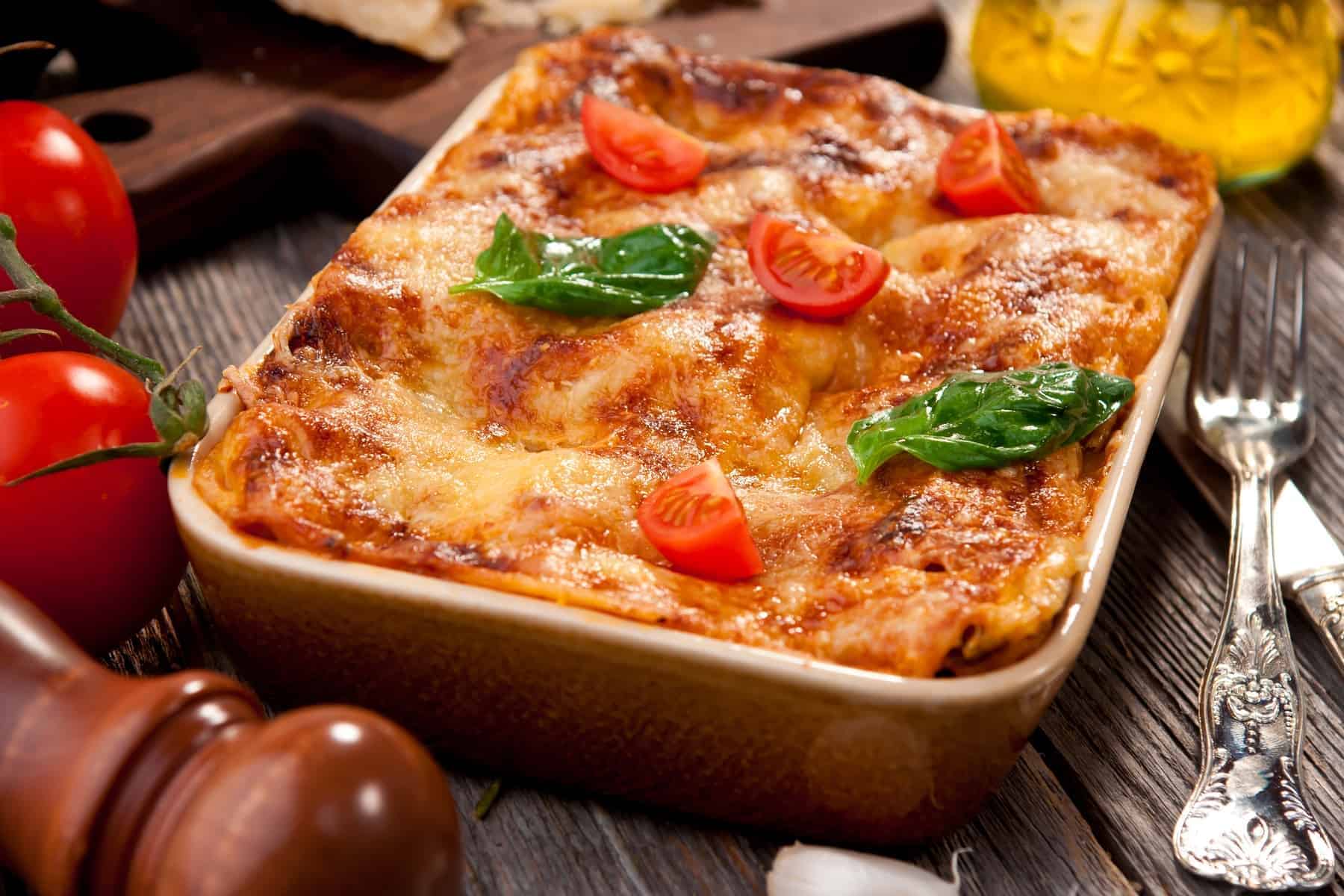
Lasagna, Italy
Lasagna (Bologna)
One of the oldest pasta recipes in the world, lasagna is a traditional Italian comfort dish prepared by alternating layers of pasta sheets, meat, sauce and cheese.
While there are countless ways to prepare Garfield’s favorite food, the most popular variation is still the classic Lasagna alla Bolognese, made with ragù (meat-based bolognese sauce), Béchamel sauce and Parmigiano cheese. Reggiano.
Lasagne Napoletana, on the other hand, features meatballs, sausages, as well as ricotta and mozzarella instead of Béchamel sauce, and is typically served in Naples during the Carnivale.
There is a dispute as to whether it was invented in the Middle Ages in Naples or if its origins date back to ancient Greece, but one thing is for sure, lasagna is one of the most delicious baked dishes that the Italy has to offer.
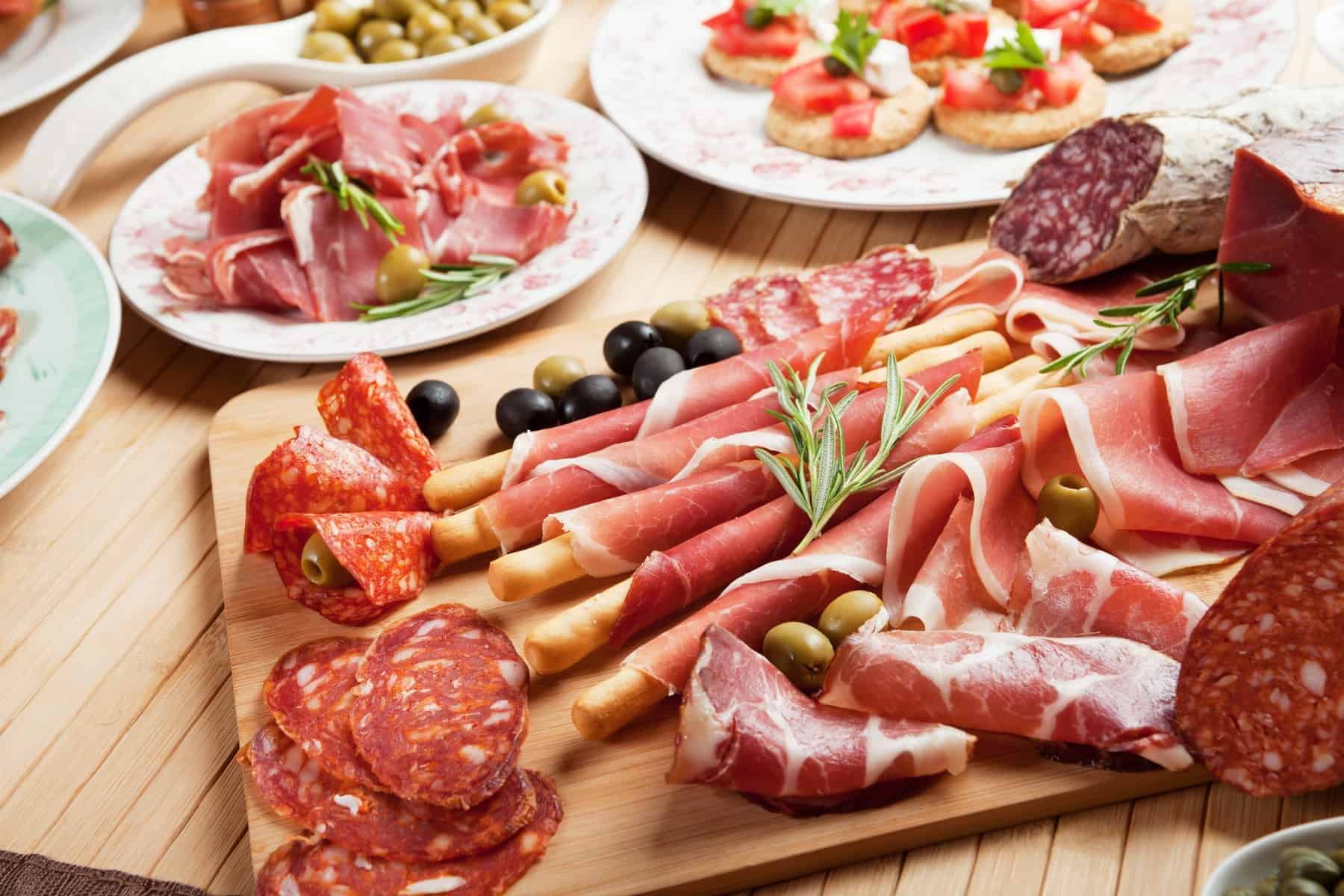
Italian prosciutto (ham) and cured pork meat on cutting board
Prosciutto
Prosciutto is a sliced dry-cured ham, served as an antipasto, which means it is a dish to be eaten or served before a meal.
Although uncooked, prosciutto is healthy to eat due to the drying process.
It is made from pork or bacon or the ham from the upper part of the neck and is sometimes served on breadsticks or a sliced or cubed melon. Prosciutto is not only for slicing and grilling up into sandwiches but is used in various dishes and stuffings, such as in pasta dishes.
Prosciutto di Parma is named after the city of Parma in Italy, where the best quality is made. It is the best-known prosciutto and is prepared by a method of salting and air drying from the month of March, which is done at a very low temperature. This is one of the reasons Prosciutto di Parma is more expensive than other prosciuttos.
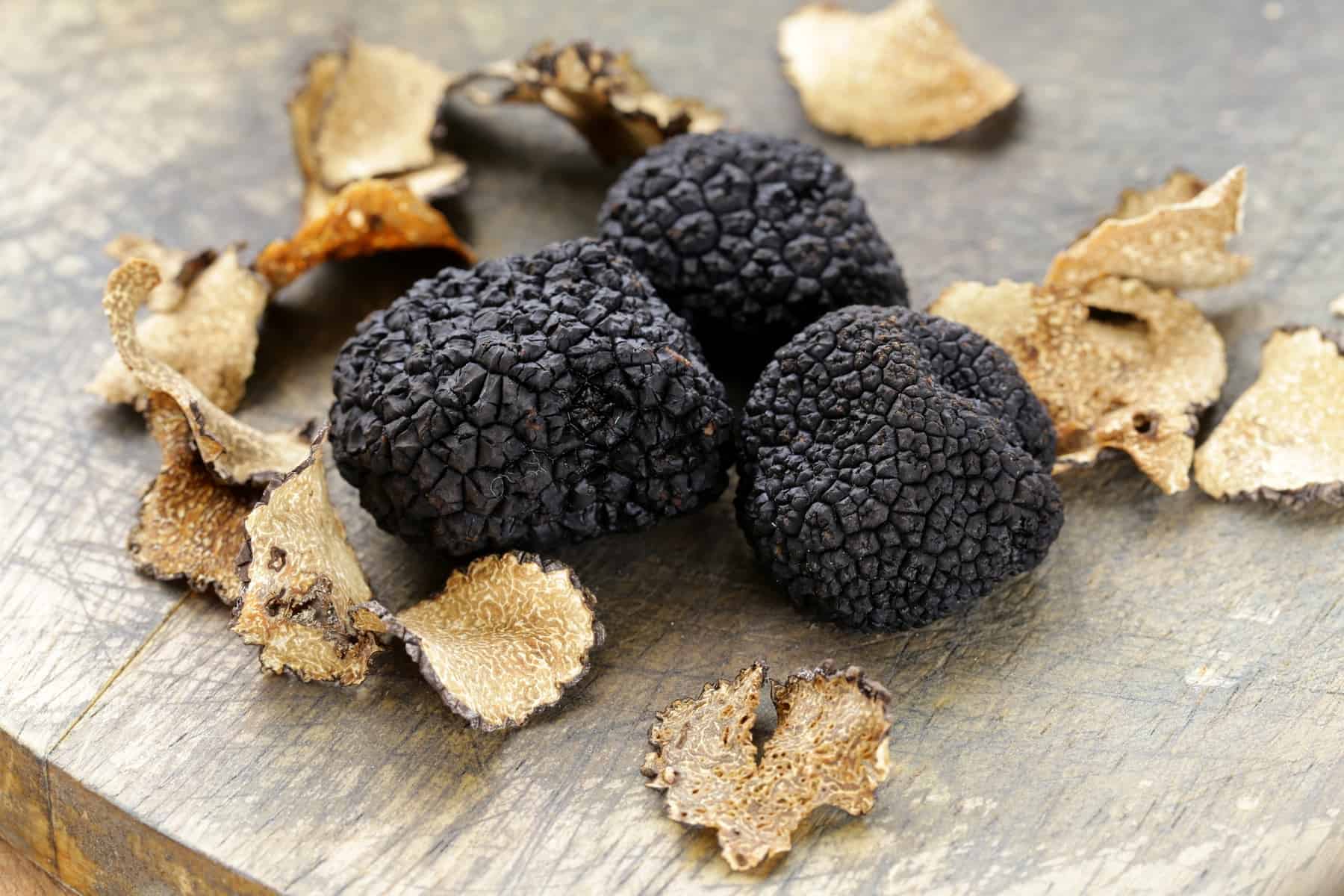
Expensive rare black truffle mushroom – gourmet vegetable used in Italian food
Truffles
One of the most expensive and desirable foods in the world is this tangy, elusive mushroom – and Italy is one of the few countries where they can be found in abundance! Well and in France (Perigord) and Japan. Truffles are “hunted like an escaped convicts with dogs and captured” in the forests and mountains of Umbria and Piedmont. They train truffle pigs and dogs to find the truffles. Try white (more expensive) and black truffles and decide which one you prefer.
Although Japan prides itself on being the truffle capital, the best truffles in the world are found in Italy. Unlike Japan, however, Italy celebrates these less common varieties of truffle. The flavor may be a little bit more pronounced to some people, who do not like it very much because they feel, it tastes and smells a little bit like gasoline, which to connoisseurs is good. Their popularity is increasingly growing, but their widespread use in Italian cuisine makes it an all-time favorite variant of expensive Italian food. We are talking 100s of dollars per pound.
Truffles grow naturally all over Umbria, Tuscany and Piedmont, so you’re more likely to find fresh truffles in local dishes in these regions, but only if you go in the fall. If you want to visit the truffle country in the fall, then you can visit a truffle festival in November. The legend says that Alba International White Truffle Festival in Piemonte, Italy is the most prestigious.
If you are new to truffles, we recommend that you start with fresh pasta, such as macaroni, and drizzle a fine amount of truffle oil on top. But you can also use bread or crusty baguettes. Truffles are usually spread over pasta, risotto, or other forms of dishes, which itself may be used to spice a steak.
World´s biggest truffle company is Sabatini in Italy
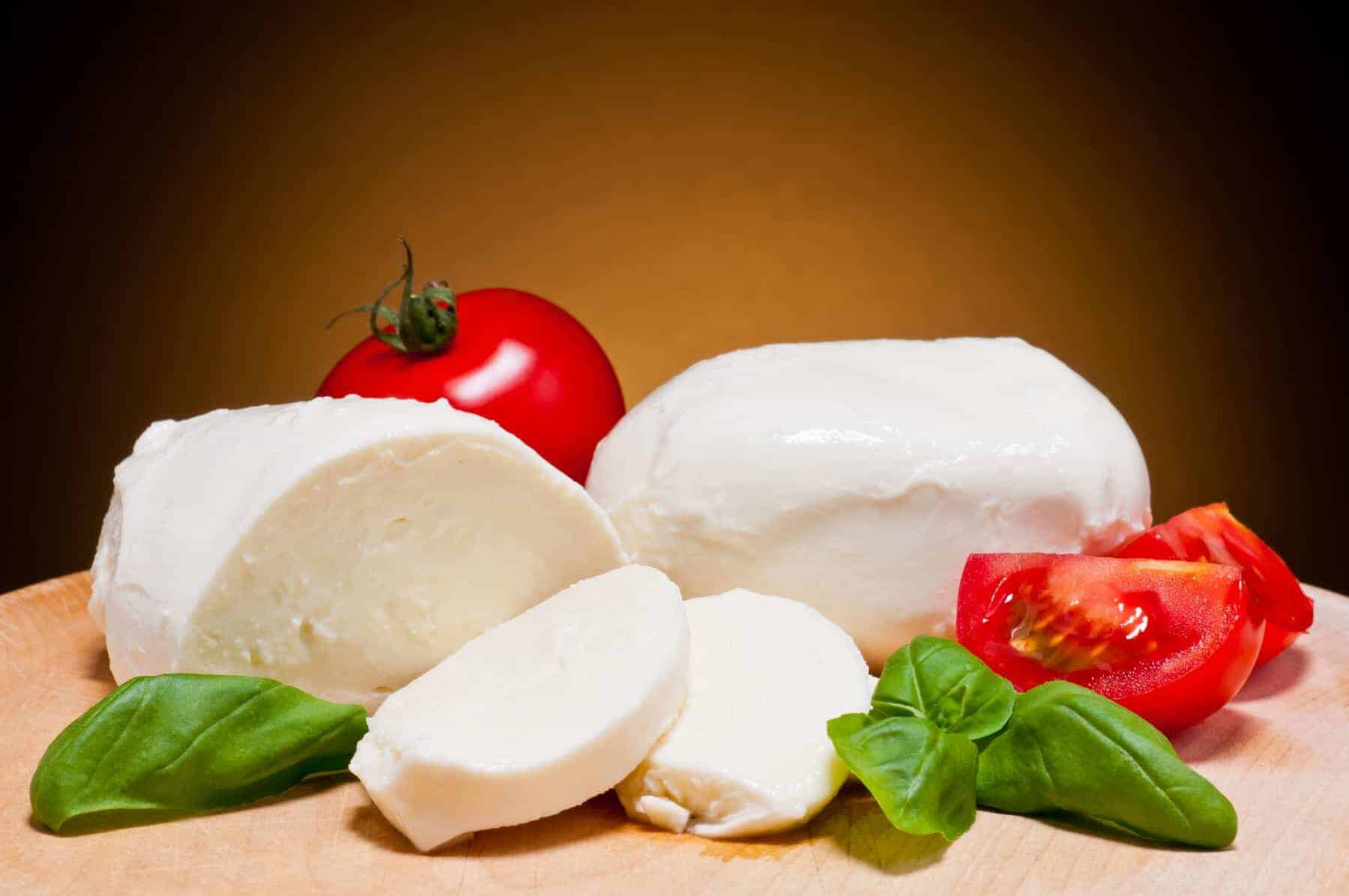
Mozzarella, tomatoes and basil
Mozzarella
Mozzarella has historically been referred to as a raw spun cheese obtained by a particular method of processing (the method of filata pasta) in which the cheese dough is spun (stretched and kneaded to achieve the correct consistency) and is then cut to size. From buffalo milk, you will get the finest mozzarella (mozzarella di bufala) (mozzarella di bufala).
Mozzarella is now sold in various forms (fresh, smoked, wrapped in leaves, stuffed or seasoned) and in various shapes and characteristics ( mozzarella di bufala Campana, mozzarella di bufala, mozzarella tradizionale, mozzarella fior di latte
The best mozzarella can still be found south of Naples, near Battipaglia and Caserta, where, according to the traditional recipe, it is made with raw milk. This form of mozzarella, sadly, has a very limited shelf life and can rarely be found outside its area of origin.
Notice that authentic and fresh (non-industrial) mozzarella should not be stored in the refrigerator. This goes for mozzarella, of course, bought in Italy. If it has to be stored in the refrigerator, this indicates that it has been handled or processed in a manner that is not compatible with how genuine mozzarella is produced. True mozzarella is stored in its siero (the liquid in which it is stored) in a dry and cool position and must be eaten within 5 days of production (approximately 24 hours after purchase, so be careful). Keeping it in the fridge makes it spongier and less “milky” (approximately 24 hours after purchase, to be careful).
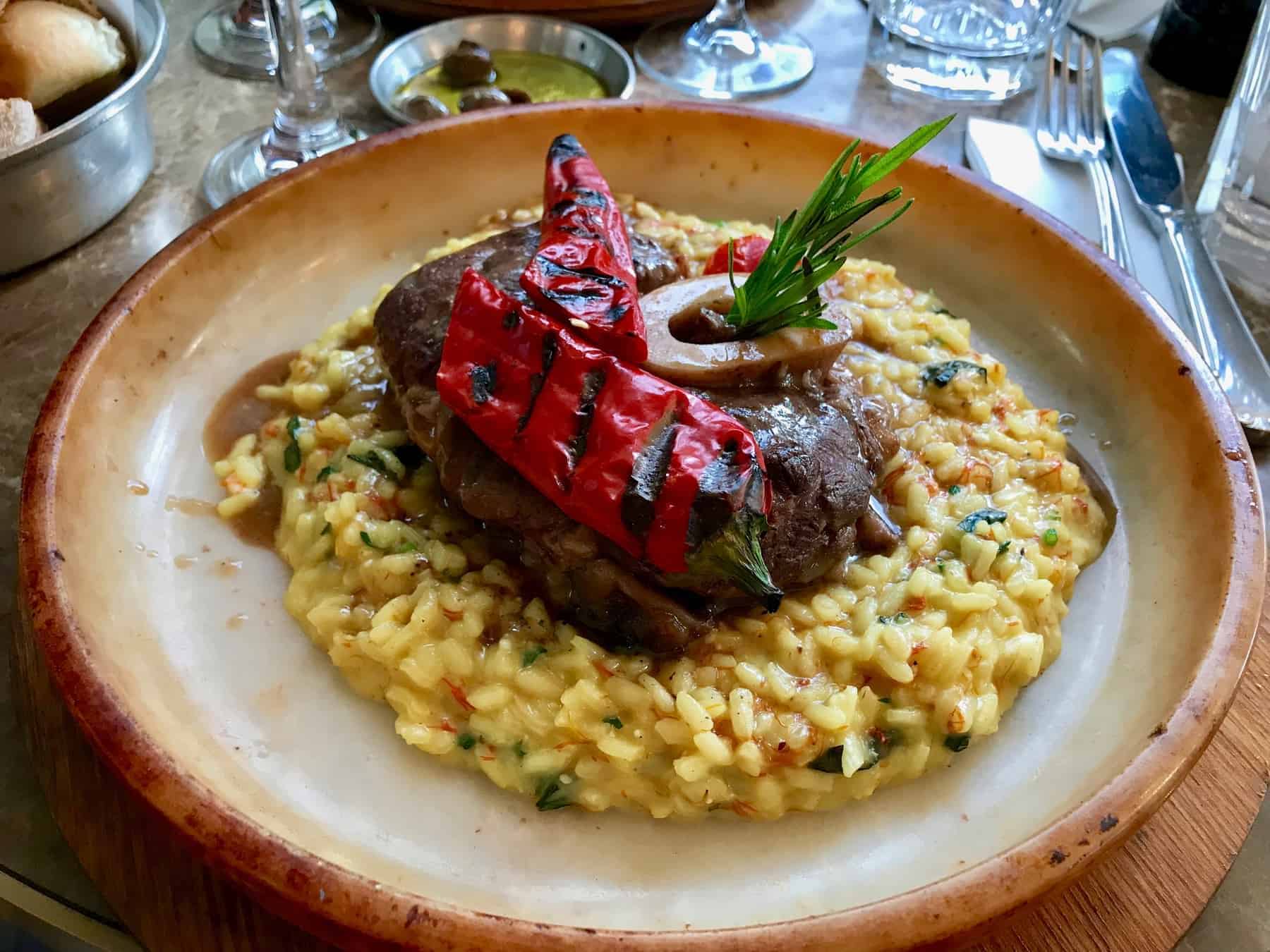
Osso Buco, Veal Shanks that are Braised in Wine with Saffron Rice
Osso buco alla Milanese
Food lovers have the luxury of joining the osso buco alla Milanais!
A variety of vegetables are eaten with tender veal shanks, slowly braised in white wine. To complete the sauce, a serving of aromatic gremolata, a condiment made from garlic lemon zest, and parsley, is added.
When you’re finished with the meat and veg, the meal doesn’t end, as the best part of the dish is scraping the creamy marrow from the veal bones and enjoying it.
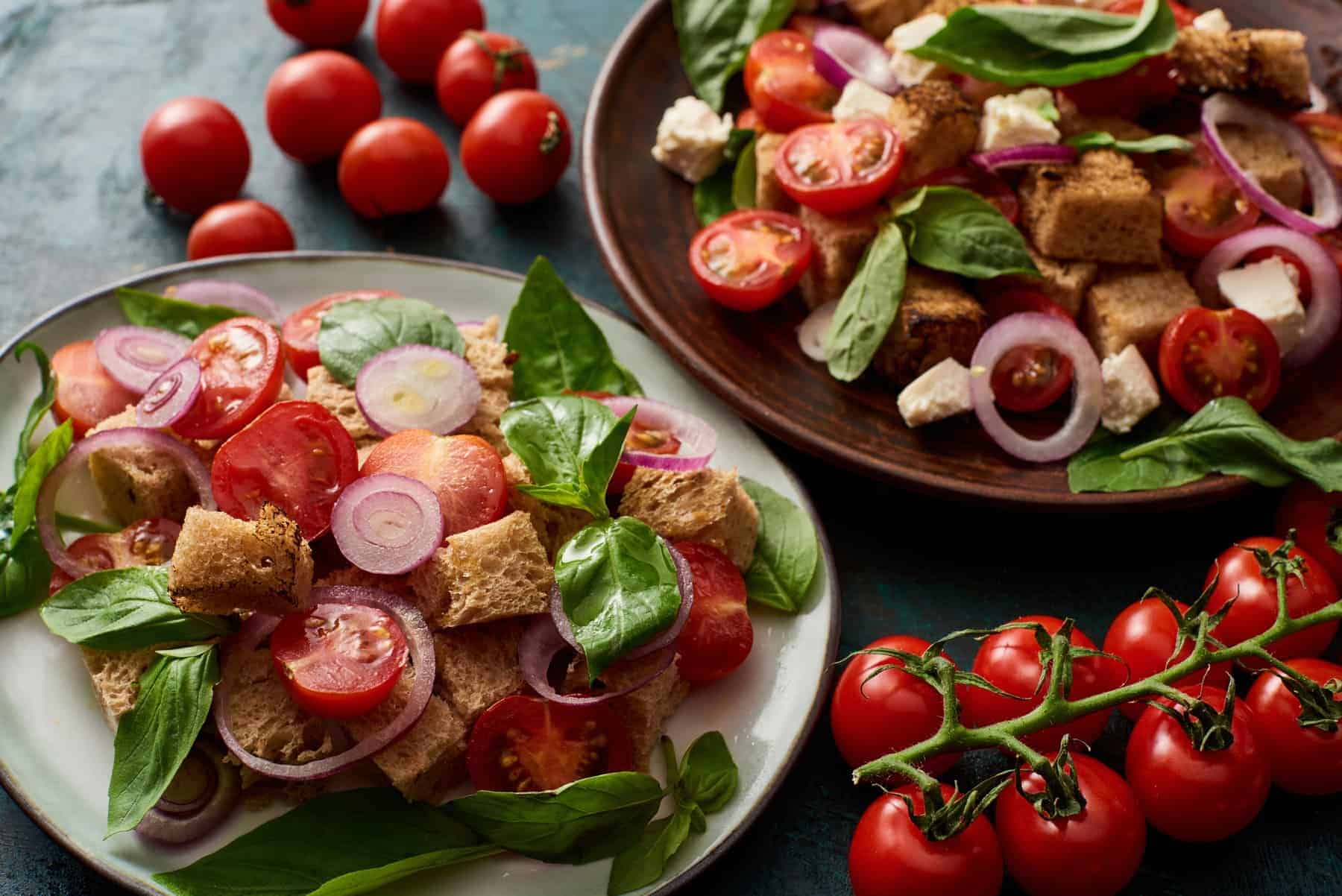
Panzanella, Italian delicious fresh salat
Panzanella (Tuscany)
Panzanella is a balanced and delicious bread and tomato salad usually served in central Italy during the hot summer months, and it is a staple of Tuscan cuisine, or better still, called the Italian’cucina Povera ‘. The poor cuisine of Italy has created some of the best food ever. It has its roots in the lush green fields of Tuscany, where farmers had to rely on locally grown produce for food while working.
The love affair with bread salads in the area dates back to the 14th century, but the original recipe was based on stale bread and onions prior to the discovery of the New World and the introduction of tomatoes to Europe.
Meanwhile, today’s Panzanella is made from juicy sun-ripened tomatoes, cucumbers, fresh basil and leftover bread, and seasoned with vinegar and olive oil.

Saltimbocca
Small slices of veal are used in the dish, garnished with salted prosciutto and herb leaves. Coupled with a toothpick, these ingredients are sautéed in a pan until the meat is cooked. To prepare saltimbocca, various types of meat, such as chicken and mutton, are also used.
A well-made saltimbocca serving promises to be a sweet, melt-in-your-mouth dish. This savory delight is certainly not to be missed and is very popular among locals and travelers to Italy.
You can learn to prepare this dish yourself while you are in Rome. You will be taught the elegance of Italian cuisine with a cooking class right in the heart of Rome during a market tour.
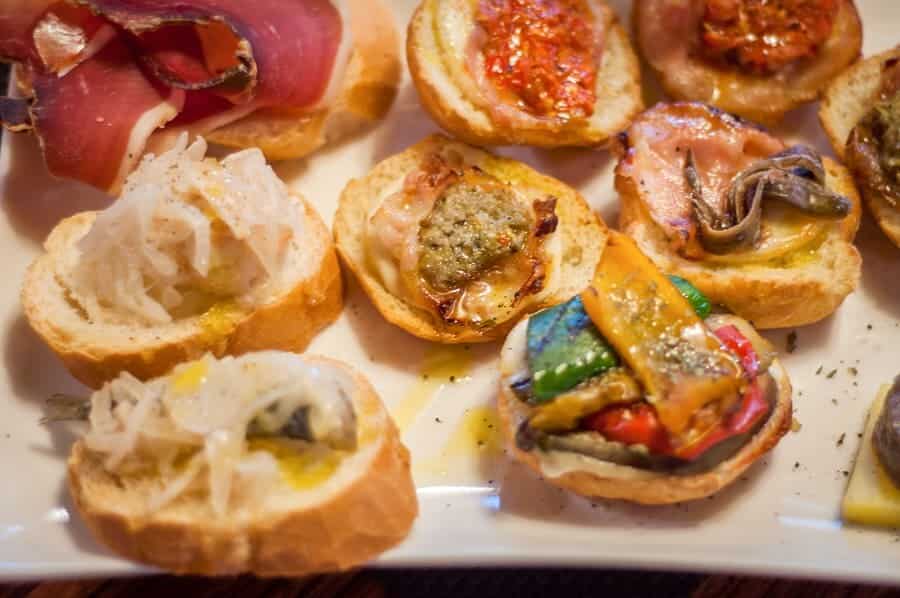
Italian food. Cicchetti are small snacks served in traditional bars called Bacari in Venice
Cicchetti (Venice)
Similar to Spanish tapas, in typical Venetian wine bars called bacari, Cicchetti are moderately priced small plates served traditional Venetian ways. This can vary from artichoke hearts to bachelà mantecato pieces (cod in cream) and is usually accompanied by Ombra (a small glass of wine).
Cicchetti bars are a breath of fresh air in a city full of tourist restaurants like Venice, offering you the opportunity to mingle with the locals and sample the authentic local cuisine.
In the back alleys of Venice, especially in the area around the Rialto Market, Bacari can be found in abundance, but make sure you go early, as they typically close at 8 or 9 p.m.
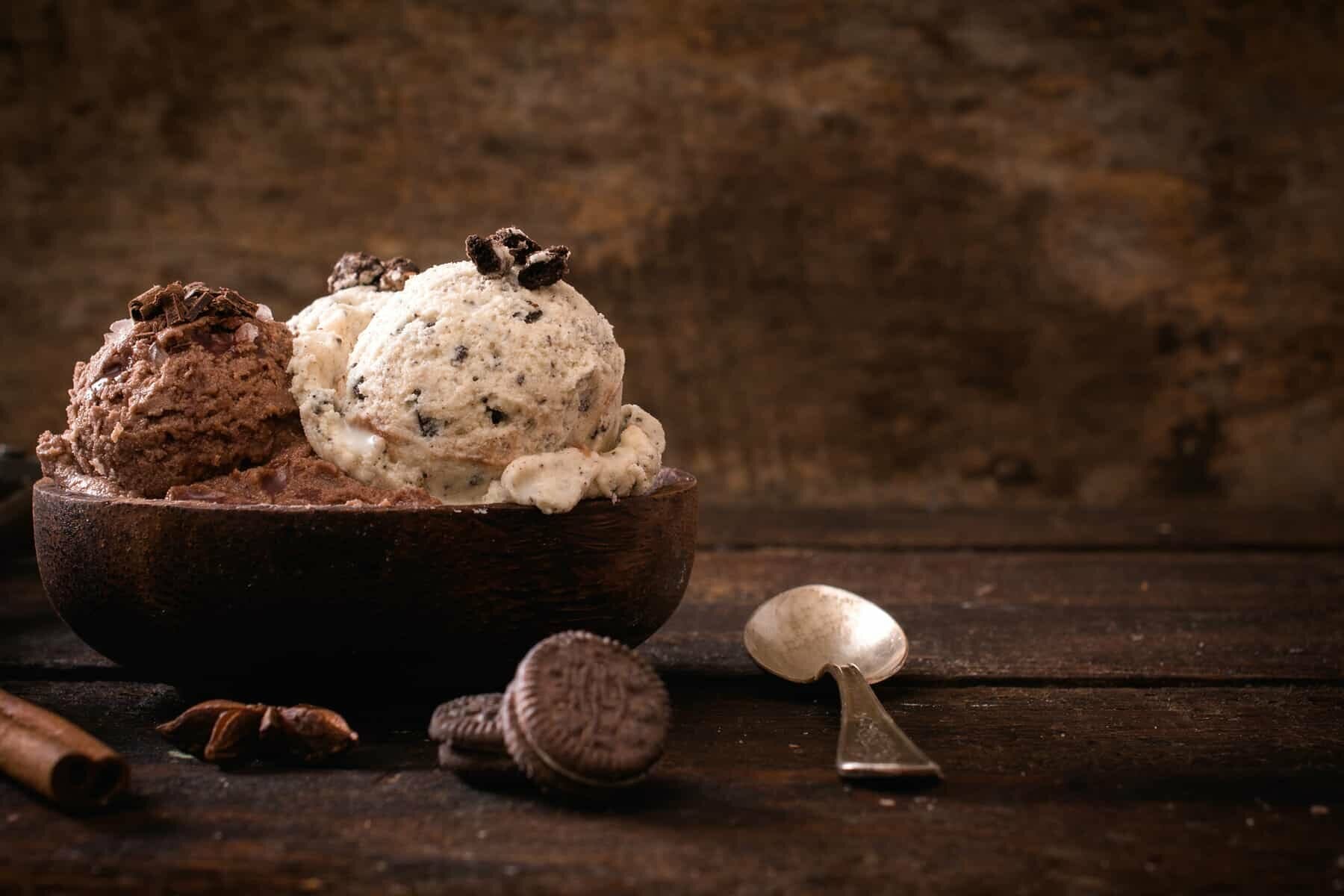
Italian food. Chocolate and stracciatella ice creams in a wooden bowl
Gelato
Without gelato, no trip to Italy is complete! If you’re tempted to grab a scoop (or two) a day, don’t worry, eating ice cream regularly in Italy is perfectly normal, particularly in the summer.
Although gelato translates to “ice cream,” it is not exactly the same. Ice contains much less fat than ice cream. around 4 to 8 percent in contrast with 14 percent in the United States for ice cream. The low fat content ensures that the ice cream is eaten a little warmer and appears to melt quicker in the mouth, intensifying the taste and giving it a smoother texture as well.
ice has a much higher density. Regular ice cream has air and water added to increase bulk and weight. Unfortunately, these additions also make it less tasty. This practice is illegal in Italy, leaving the ice cream (at least, the traditional homemade ice cream) super soft and super tasty. Finally, good ice cream is not made for long term storage.
Looking for the good stuff? Find the best ice cream in Rome, Florence and Milan.
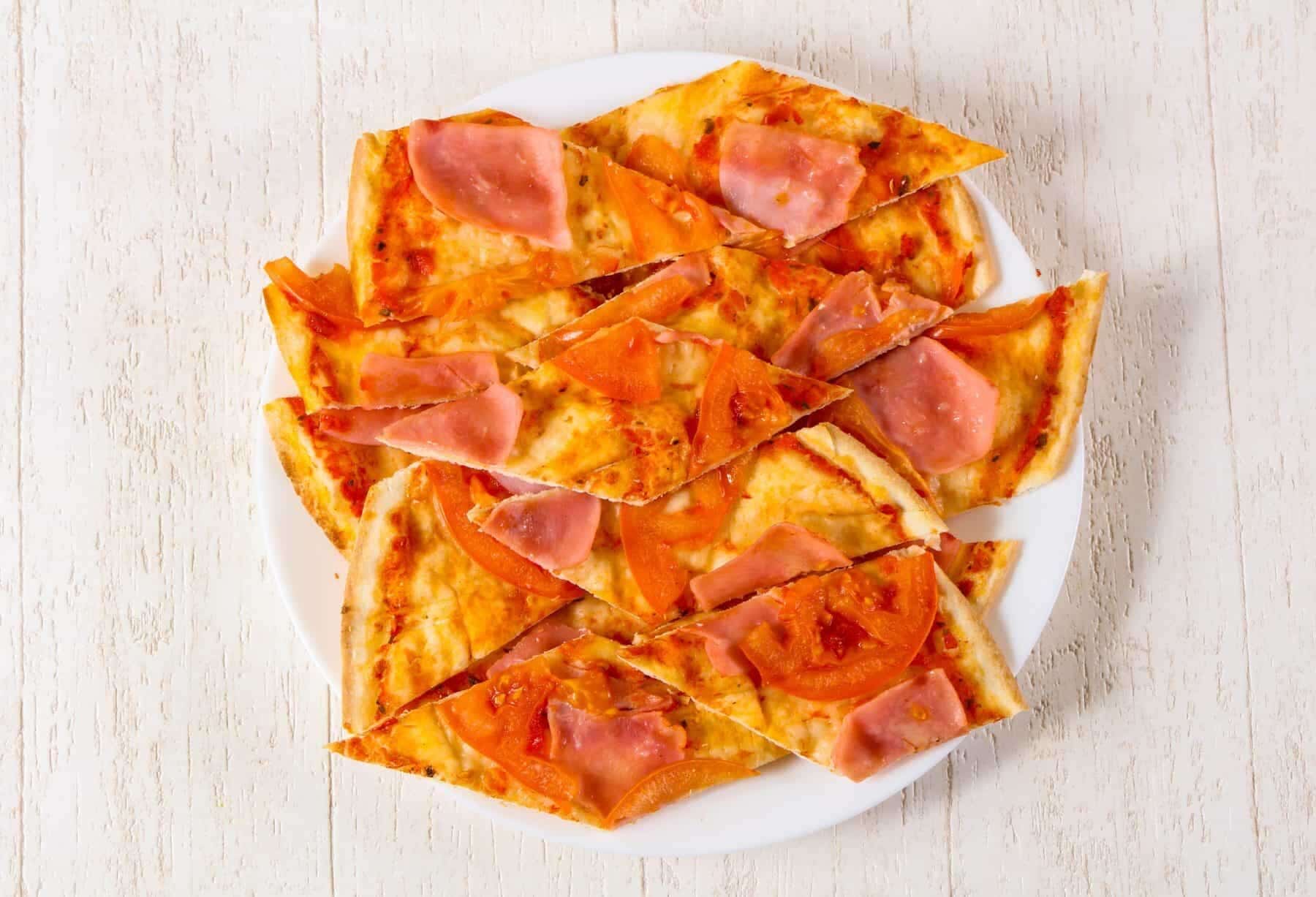
Italian food, Focaccia with cheese
Focaccia (Liguria)
Often associated with Ligurian cuisine, focaccia is one of the most beloved and delicious breads of Italian food. Its name derives from the Latin term “panis focacius”, which means baked flatbread.
While there are countless varieties throughout Italy, the classic Genoese focaccia alla (known locally as fugassa) found in Genoa and villages on the Italian Riviera is considered the best in the world. This is usually made with a combination of soft and hard wheat flour, yeast, water, salt, and high quality extra virgin olive oil.
Outside of Liguria, focaccia is often flavored with herbs, as well as garlic, tomatoes and basil. A popular variation is focaccia al rosmarino (rosemary focaccia), which is often served as an antipasto or table bread.
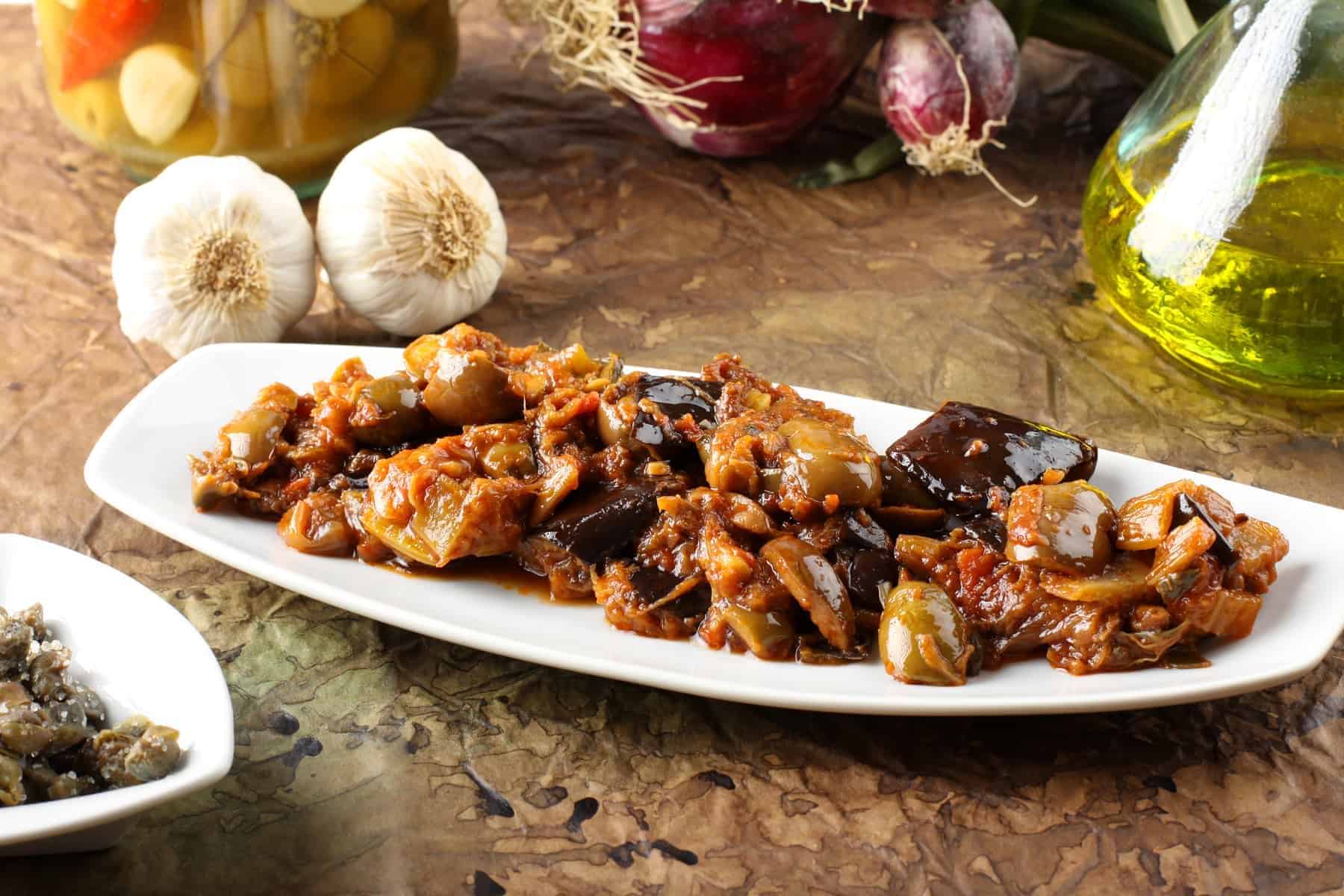
Sicilian Caponata ready to go !
Other regional Italian food:
Caponata (Sicily)
Italian food is also Sicilian food and food from Sardegna. Sicilian cuisine is a wonderful blend of Greek, Arabic and Spanish influences, but if you only have one meal here, let it be caponata, the island’s beloved eggplant dish.
The star of this hot vegetable salad is eggplant, but it’s the gorgeously sweet and sour sauce that makes it an unforgettable vegetarian delight. It usually contains onions, celery, capers, and all the vegetables that people have in their kitchen. Otherwise, there is no standard recipe for caponata, as every house and restaurant has its own version.
For this reason, when eating in Sicily, it is not uncommon to find olives, raisins, pine nuts and even octopus in your caponata.
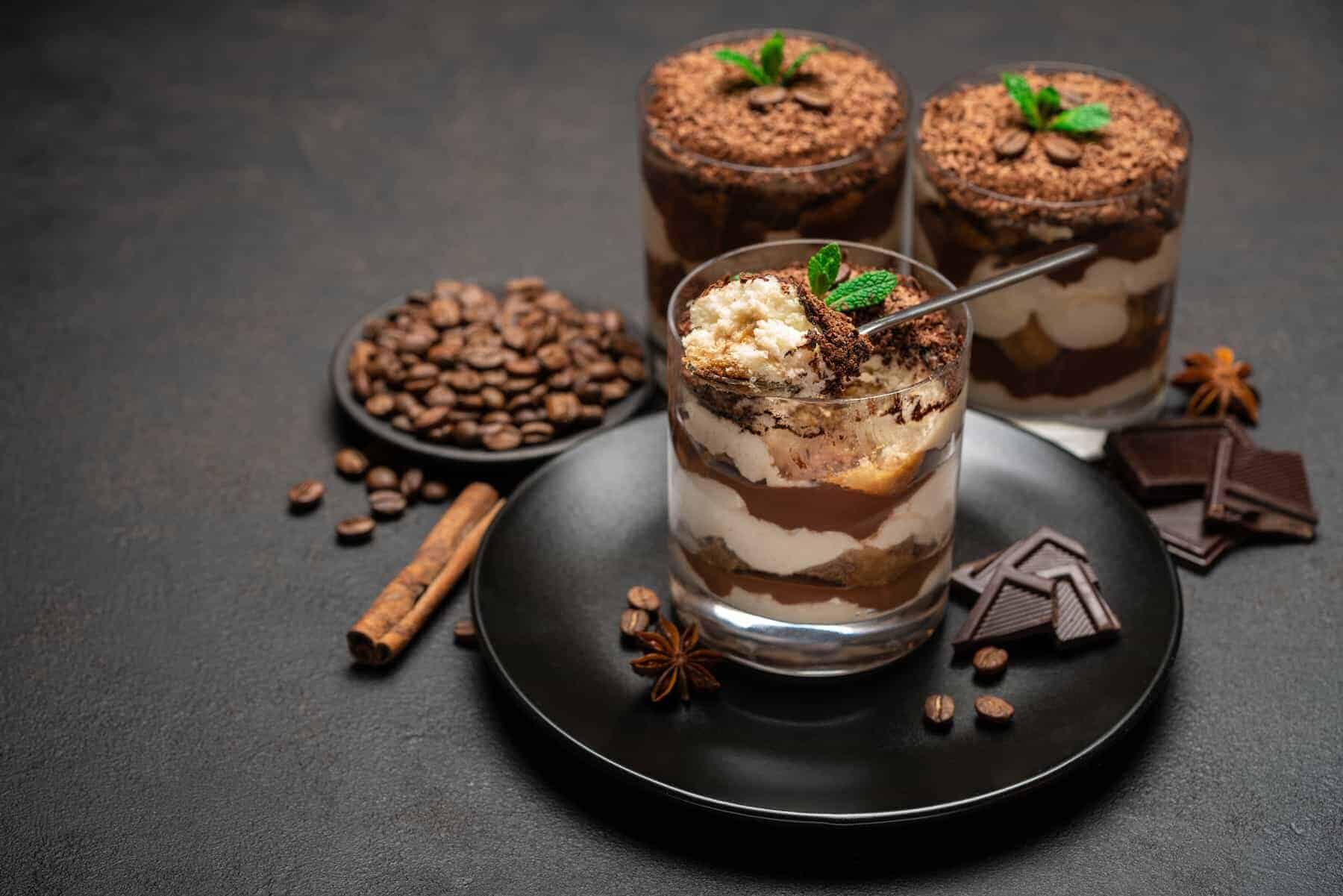
Classic tiramisu dessert in a glass cup and pieces of chocolate on stone cutting board on dark concrete background, a finishing delight of Italian food
Tiramisu
Light and creamy, tiramisu is a well-known dessert in Italian food sought after by locals and travelers. Ingredients such as lady’s fingers, coffee, eggs, sugar, cocoa and mascarpone cheese needed to make this sweet treat.
If you are visiting Rome, you can also attend a fresh pasta and tiramisu cooking class to learn how to make homemade tiramisu.
The dessert makers have given an innovative twist to the traditional tiramisu recipe, offering varieties such as fruit tiramisu, chocolate tiramisu and intriguing sounding ch’tiramisu.

Digestives
The term “digestive” or “digestive” does not refer to a drink, but to a class of drinks that are enjoyed after a substantial meal with the aim of calming the stomach and helping you feel less full. Their consumption dates back to the Middle Ages when people across Europe believed in the medicinal properties of alcohol mixed with sugar and herbs. While doctors still don’t know the medical benefits of drinking medium to strong liquors after a meal, the point is, you can’t say you’ve enjoyed a real Italian meal unless you top it all off with a dose. of hard substance. Popular digestives include limoncello, Sambucca, Grappa, Amaro, Cynar, Amaretto. If you’re feeling sweet and perhaps party oriented, Sambuca is your go to Digistive. You coffee beans and light them up for a perfect “roasted digestive”. If you think outside the box in Italy, you will also discover all types of good after-dinner dishes made with local fruits and herbs.

More Italy, more food from travel destinations
Friuli, a mountain of hospitality
Why you have to visit Altamura
What to eat traveling in France, Europe
What food to sample in Mexico?
Thai Food, you should try going to Thailand
Vietnamese Food from North to South
African food from Egypt to South Africa
Intro to food and wine traveling
Why are wineglasses important?





